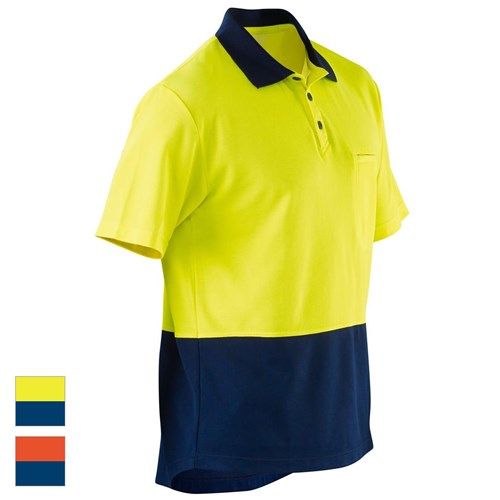HIGH VISIBILITY STANDARDS
Staying safe at work is important, knowing what is recommended will help you make the right uniform choice.
The below standards are relevant when working in Australia and New Zealand.
AS/NZS 4602.1:2011 High visibility safety garments – Garments for high risk applications.
This standard outlines how a garment needs to be designed to meet:
When working around vehicles or moving machinery it’s important to ensure you and your workers are clearly visible. Every ELEVEN Workwear Hi Visibility garment meets the Australian & New Zealand Hi Visibility Standards AS/NZS 4602.1.2011 and AS/NZS 1906.4.2010 so you can be confident you will be safe and protected.
MEETING CLASS D - DAY COMPLIANCE MUST FOLLOW THE FOLLOWING KEY POINTS:
• Hi visibility AS/NZS 1906.4:2010 approved colour, encircles the entire upper torso
• There must be 0.2m2 of hi visibility colour on front and back of the garment
• Logos, screen prints, silver retroreflective tape and anything else that is added to a garment cannot be included in the measurement to achieve 0.2m
AS/NZS 1906.4:2010 Retro reflective materials and devices for road traffic control purposes - High-visibility materials for safety garments.
This Standard specifies the photometric, colorimetric and physical property requirements for:
- High-visibility materials intended for outdoor daytime use
- Retroreflective materials for night use and
- The manufacture of clothing into industrial safety garments
This standard classifies materials into Class F -Fluorescent and Class N - Non Fluorescent. There is an additional classification of W for wet compliance - Class F(W), and Class NF(W ) are relevant to rainwear garments.
Fluorescent materials provide greater visibility than non-fluorescent materials. However, care should be taken when choosing the right garment to ensure the best protection is provided for its intended use.
AS/NZS 4602.1:2011 High visibility safety garments - Garments for high risk applications
This Standard concerns the design of a garment. It outlines how a garment should be designed in order to meet Class D – Day time use only, Class N - Night time use only, Class D/N – Day/Night use.
The Standard recommends these garments are worn by people who may be exposed to the hazards of moving traffic or moving plant and equipment in high risk situations.
- CLASS D Day time use only
- CLASS N Night time use only
|
CLASS D
|
|
|
CLASS D SHIRT
|
CLASS D POLO |
 |
 |
|
CLASS D/N
|
|
|
CLASS D/N SHIRT
|
CLASS D/N POLO |
 |
 |
FLUORESCENT MATERIALS
The Standards recommend the use of fluorescent materials for achieving Day compliance, however provisions have been made for non-fluorescent hi visibility colour to also meet these Standards.
Cotton, an all-natural fibre, can only achieve the non-fluorescent hi visibility classification. The Standards acknowledge there are workplaces and situations where workwear made of natural fibres is preferred rather than man-made fibres (such as polyester).
IMPORTANT
Important: As Day compliance is dependent on the amount of hi visibility colour meeting 0.2m2 on the front and back, it should be noted that adding a large logo or embellishment to a garment could render it non-compliant.
ELEVEN Workwear garments are specially designed to allow the addition of a company logo or message. As a general rule of thumb, if a logo takes up less than 10cm x 10cm square in space, it will not affect the compliance of a garment. Please contact us directly for more information if needed.
MEETING CLASS D/N - DAY AND NIGHT USE
A garment must meet both day requirements and night requirements. Night requirements are met when an approved AS/NZS 1906.4:2010 retro reflective tape is used in the correct tape configuration.
There are a few ways to tape a garment to meet night compliance requirements. The most common are Hoop, X back, & H pattern. The tape must be a minimum width of 50 mm. In Australia 2 x 25mm strips are also permitted. It should be noted that wearing white at night is more visible than wearing a fluorescent colour, as the “glow” from a fluorescent colour only occurs when it is hit by the sun’s UV rays.